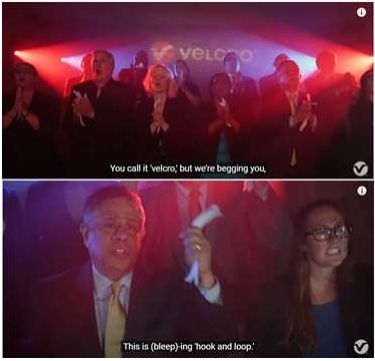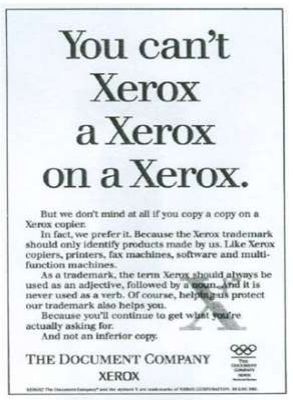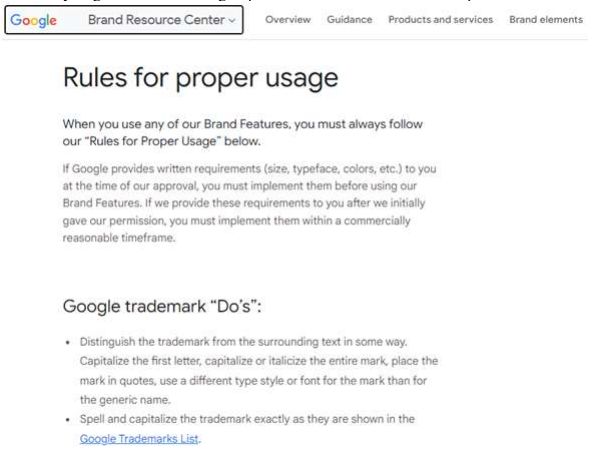It is the intention and rather the duty incumbent upon every individual and/or business to ensure that their brand is striking, stands out amongst the public and has attributes to easily become familiar with the target audience. However, this is where budding businesses must tread with caution, as a brand becoming too familiar may lead to Genericide!
Generic Trademarks v. Generic Terms
'Generic' trademarks are those which with constant use, become so popular in the daily use of language by the public, that the mark is no longer associated with the particular business entity, and instead assumes the meaning of a particular good and/or service itself. In such cases, a mark which is originally granted registration on the basis of its distinctive character, becomes generic and eventually loses its distinctiveness. This process is known as genericization. Some examples of generic trademarks include - Aspirin, Band-Aid, Cellophane, Velcro, and Thermos; all of which have gained a generic status due to extensive use of the term, in a manner where it is interchangeably used in everyday conversation for a product identical in nature, and not necessarily associating it with the original brand.
Inversely, a mark which is originally 'generic' in nature, is not eligible to be protected by Trade Marks law at all, unless the Applicant successfully justifies that the said mark has acquired a secondary meaning in connection with its business. For example - a proprietor engaged in the business of perfumes, would not succeed in obtaining registration for the word mark "perfume" as the same is evidently a generic term in the context of its business. The same, if granted protection, would monopolize the entire trade and forcefully drive out the competitors from the market. However, if the proprietor sufficiently shows cause that the term "perfume" has indeed acquired a secondary meaning, then the same may be granted protection under the Trade Marks law.
Trademark Genericide
While the term trademark genericide is not defined within the Trade Marks Act, 1999, the same refers to a process of the loss of distinctiveness in a given mark over a period of time, as a result of which the mark starts to be used "generically" in the context of certain goods or services. The term Band Aid is also another example of generic trademark- it was originally acquired and registered by Johnson & Johnson. However, the mark has been used so frequently that the term Band Aid has now become synonymous with "adhesive bandages".
The genericization of a trademark grants free pass to other competitors in the trade to ride upon the goodwill and fame garnered by the original business entity. Much like the example of Xerox, wherein even though photocopies can now be made with machines from Canon, Ricoh or Toshiba, consumers still continue to use the term Xerox which has assumed the meaning of photocopying.
The law with respect to the interests and rights of a business entity that lost its trademark to genericide, continues to remain gray.
Case Laws
The word mark 'App Store', coined, registered and acquired by Apple Incorporation was not granted protection in the Australian Courts, for becoming generic, within one year of its registration.1 The Federal Court of Australia dismissed Apple's appeal, stating that "the App Store must not be taken as not being capable of distinguishing the designated services as Apple's services." Some other examples include the term 'Escalator', which was originally registered by Otis, but the same lost its protection due to becoming generic. The mark 'Aspirin', which was originally adopted by a company named Bayer, also met the same fate owing to the mark being used too commonly.
In the case of Dabur India Limited vs. Emami Limited2, the High Court of Delhi accepted that generic words cannot be granted exclusive rights, which in this case was - Chyawanprash, However, it decided on a question of law pertaining to that matter, and not on whether the Party should cease to enjoy exclusive rights over the generic word - Chyawanprash.
Further, the Madras High Court in the case of Mr. A.D.Padmasingh Isaac and M/s Aachi Masala Foods (P) Ltd vs. Aachi Cargo Channels Private Limited3, held that granting exclusive rights over a generic term to a single proprietor would be unfair to other proprietors in the trade and the same would be against the principles of natural justice. However, the Court acknowledged the use and registration of composite generic trademarks, which refers to the combination of a generic term with other terms. The same was also accepted by the Supreme Court in the case of Parakh Vanijya Private Limited vs. Baroma Agro Product and Others4, wherein the Court allowed the registration of a business entity looking to protect the mark 'Baroma Malabar', which was opposed by the appellant with 'Malabar Gold' as their registered trademark. In this case, the court also observed that the generic term 'Malabar' cannot be granted to one single business entity.
Currently Vulnerable & Companies Salvaging Genericization
Currently, there are several registered marks that are enjoying exclusive rights under the trade marks law, but are highly vulnerable to genericization. For example, "Google" is slowly becoming synonymous with looking up information on the internet e.g. - 'Google it', 'Googling", etc.
Perhaps, the current trend of using trade marks as verbs while marketing ones' own brand helps gain instant traction, though, the same makes it highly vulnerable to fall prey to trade mark genericide, in the long run.
While some entities are busy harvesting the (rather, short term) benefits of their trade mark becoming borderline generic, several multinationals have indeed began recognizing the underlying issues that come with genericization of their trade marks and have taken active measures to prevent the same. For instance, Velcro IP Holdings LLC and trading as Velcro Companies, having the brand name VELCRO, in respect of "hook-and-loop fasteners" repeatedly urges the public to not use its trade mark interchangeably for the type of product, as they are at a high risk of losing their rights in the "trade mark". In 2017, the official YouTube page of the brand VELCRO posted a video trying to create awareness among the public.5

By way of another example, to counter the effects of the term 'Xerox' becoming vulnerable to becoming synonymous with 'the act of making copies of a document', Xerox Corporation came-up with "anti-genericide" advertisements to educate the people regarding its trade mark rights over the term 'Xerox'. For example, they introduced creative advertisements carrying taglines like - "You can't Xerox a Xerox on a Xerox. But we don't mind at all if you copy a copy on a Xerox® copier." and "When you use 'xerox' the way you use 'aspirin,' we get a headache.". Such efforts humorously and tactfully conveys to the consumers that their trade mark must not be interchangeably used.

Another noteworthy strategy includes the case of Google, where they published "rules for proper usage"6 for all its trade marks, in order to prevent the use of "Google" as a common verb. However, the real test is the actual impact of the publication of such rules, in comparison to the strategy adopted by Xerox Corporation. For a message to have a wider outreach, the approach adopted by Xerox may reap the desired results in a better manner, as it is seldom that a user would voluntarily go into reading policies and other fine print of the like.

Genericide Prevention
One of the main reasons behind Trademark Genericide, includes the continuous use of a trademark by the public to the point where it is used to denote a particular product rather than the source. Thus, the duties of a trademark owner do not end with the "due diligence" before adopting and registering a distinctive trademark, but also goes beyond the point of registration. In other words, preventing distinctive trademarks from becoming generic very much lies in the hands of the business, which must be duly practiced. In this regard, WIPO7 lays down certain useful guidelines to prevent trademark genericides, including:
- Using the ® symbol appropriately, upon registration
- Including consistency in the usage of the trademark, exactly as registered, and avoiding modifications. For instance, MONTBLANC® fountain pen" should not appear as "Mont Blanc".
- Avoiding the usage of trademarks as nouns, verbs or plural forms.
- Establishing a code of conduct with respect to the usage of trademarks, within the organization.
Additionally, initiating appropriate legal action in a timely manner is as important, in order to protect one's trademark rights.
Therefore, it is pertinent for businesses to strike a balance while promoting their trademark, so that they are advertised to the extent that they become well known, but not generic. Indeed, it is the duty of the respective businesses to identify and adopt best practices that could possibly prevent the genericization of their trademarks. They must understand the consumer perception of their mark, and take appropriate steps to counter any practice that may lead towards trademark genericide.
Footnotes
1. http://appleinsider.com/articles/14/12/02/apple-loses-appeal-for-australian-app-store-trademar
2. 112 (2004) DLT 73
3. AIR 2014 Mad 2
4. AIR 2018 SC 3334
5. https://www.youtube.com/watch?v=rRi8LptvFZY
7. Page 60, Making a Mark - An Introduction to Trademarks and Brands for Small and Medium-sized Enterprises (WIPO Publication) - https://tind.wipo.int/record/29006
For further information please contact at S.S Rana & Co. email: info@ssrana.in or call at (+91- 11 4012 3000). Our website can be accessed at www.ssrana.in
The content of this article is intended to provide a general guide to the subject matter. Specialist advice should be sought about your specific circumstances.

